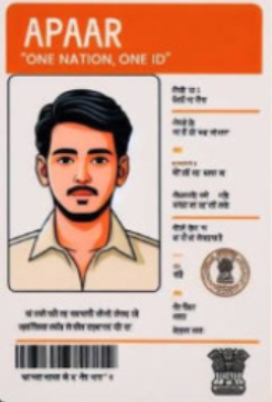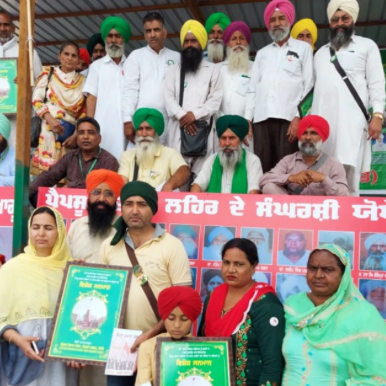Daily Current Affairs | March 20 2025
Important Topics from Current Affairs : 1) Privacy Concerns with APAAR ID 2) PEPSU Muzhara Movement 3) Rashtriya Gokul Mission 4) Samarth Incubation Initiative 5) Use of Sonic Weapons
Jumbo IAS
3/20/20254 min read
1) Privacy Concerns with APAAR ID
Activists and parents are worried about the rapid push by schools to generate an APAAR ID.
APAAR(Automated Permanent Academic Account Registry) is National Education Policy (NEP), 2020's record-keeping reforms, and while it is voluntary, States and school authorities have pushed students to enrol in it.


About APAAR
It is a program that generates a 12 digit unique student ID and consolidates all academic records, making them accessible via DigiLocker under the ‘One Nation, One Student ID’ initiative.
Launched under NEP 2020 and National Credit and Qualifications Framework (NCrF).
It creates a permanent academic record of a student on Digilocker, covering school and higher education students across India.
The scheme is voluntary and parental consent is required in case of minors.
Pros and Cons
Pros :
Seamless Student Transition - To streamline academic record-keeping and facilitate seamless student transitions between institutions.
Better Record Keeping - To promote multiple entry-exit systems, track academic and co-curricular achievements, and enable transparent educational data management.
Career Support - Facilitates job applications, skilling, and higher education admissions.
Policy Tracking - Enables policymakers to assess educational outcomes across regions.
Cons : Data privacy concerns; Officially voluntary, but states and education authorities are pushing for it; technical glitches with respect to Aadhaar integration, etc.
2) PEPSU Muzhara Movement
March 19 commemorates the anniversary of the Muzhara movement, a significant agrarian struggle in Punjab.
The movement began in the 1930s in villages of the erstwhile princely state of Patiala.
Patiala and other princely states of Punjab were reorganised into Patiala and East Punjab States Union (PEPSU) after 1947.
This movement continued in the erstwhile PEPSU state after independence and was renamed as PEPSU Muzhara Movement.


About Muzharas
The muzharas were landless tenant farmers seeking ownership rights on the land they had cultivated for generations.
Muzharas were targeted by an oppressive feudal system that involved the participation of the landlords of the village.
Biswedars(landlords) demanded 1/3rd of the produce from Muzharas, from which a share was given to King, who in turn paid some share to the British.
Muzhara Movement
This system left the peasantry in slavery and exploitation, preventing them from enjoying the full benefits of their labour.
So Muzharas launched a struggle to to get ownership rights of the land they farmed.
Even after independence, the biswedars continued demanding their share, but the movement intensified.
By 1952, land reforms were implemented, finally granting ownership rights to tenant farmers.
Why March 19 ?
In March 1949, biswedars attempted to reclaim land cultivated by muzharas.
However, they ran into stiff resistance in Kishangarh village
The situation became so intense that army was called on March 19 and it surrounded the village, resulting in death of 4 Muzharas.
3) Rashtriya Gokul Mission
The Union Cabinet has revised the Rashtriya Gokul Mission (RGM) with budget of ₹3,400 crore.
The additional outlay for the scheme for a period between 2021-22 to 2025-26 will be ₹1,000 crore.


About the Mission
It is an initiative, launched in 2014, for development & conservation of indigenous bovine breeds to enhance milk productivity.
Implementing by Ministry of Fisheries, Animal Husbandry, and Dairying.
It is a 100% grant-in-aid scheme by Central Government with few exceptions.
Objectives - Conserve indigenous breeds; enhance milk productivity; improve cattle breeding and expand artificial insemination; and reduce disease burden among cattle.
4) Samarth Incubation Initiative
Centre for Development of Telematics (C-DoT), an autonomous Telecom R&D centre of Department of Telecommunication (DoT), launches first cohort of Incubation Program named as “Samarth” with a focus on fostering innovation and promoting technological advancements in India’s telecommunications and IT sectors.
The official implementation partner for this program is Software Technology Parks of India (STPI).


About SAMARTH
The program has a maximum cohort size of 18 startups per program, with a total of 36 startups across two cohorts of six months each.
Start-ups must be recognised by DPIIT.
The program will be delivered in a hybrid mode.
Access to world-class infrastructure, grants up to Rs 5 lakh, expert mentorship, and access to a network of investors and industry leaders, will be provided to these start-ups.
Benefits
Innovation - It will lead to to R&D, innovation, start-ups and product/IP creation in the field of emerging technologies like IoT, Blockchain, Artificial Intelligence (AI), Machine Learning (ML), Computer Vision, Robotics etc.
Boost to Economy and Job Creation - It will connect people, support collaboration, attract investors and ultimately strengthen the startups community for creating a pipeline of future job-creating businesses.
5) Use of Sonic Weapons
Serbia’s President has denied that his police forces used a banned ‘sonic weapon’ to disperse protesters in Belgrade.
Serbia is currently witnessing mass protests against Vucic and his government over several issues, including allegations of widespread corruption and nepotism.


About Sonic Weapons
Acoustic or sonic weapons are devices that deliver very loud sounds over long distances.
They can be designed to emit painful audible or inaudible sound waves
How they work - Hundreds of transducers are used to convert energy into focussed directional sound waves.
A narrow beam ensures targeted impact without spreading in all directions.
Authorities can adjust frequency, volume, and direction to target specific areas.
Impact of Sonic Weapons on Health
Hearing Damage - Prolonged exposure above 120 dB can cause permanent hearing loss.
Tinnitus - Continuous loud sound causes ringing in the ears that can last for hours or days.
Physical Symptoms - Includes headaches, nausea, sweating, vertigo, and disorientation.
Severe Injury - In extreme cases, may lead to vomiting and bleeding from the ears.
Indiscriminate Effect - Can harm not just protesters but also bystanders and enforcement personnel.


